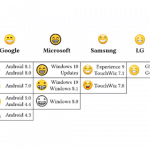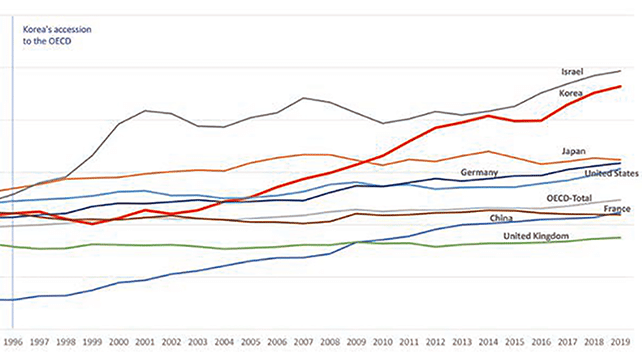What is a Privilege Log?

Growing Importance of Information Governance in eDiscovery & Beyond
May 15, 2023
Emoji – Brief History, Current Impact on eDiscovery & What Lies Ahead
September 12, 2023
Privilege logs are a critical component of eDiscovery that requires careful planning, analysis and detail in order to successfully complete. Creating a privilege log can be costly and time-consuming as specific requirements tend to vary by jurisdiction and on a case-by-case basis. As such, in this blog we would like to provide a brief overview of the privilege log process, discuss various privilege log types used today, and review how existing technologies can be leveraged to achieve efficiencies when constructing a privilege log.
Privilege logs are required by law if a party intends to withhold information from document productions by asserting privilege. Privilege logs must be comprehensive and accurate, and given its importance, it is recommended that case teams begin planning for the privilege log well in advance of generating the log, which can ideally take place during meet-and-confers or other scheduled meetings to discuss ESI and privilege-log protocols.
Best Time to Discuss Privilege Log Requirements
Privilege logs can vary greatly in detail, scope and burden. Therefore, it is considered best practice to discuss privilege log requirements when drafting ESI (electronically stored information) protocols with opposing counsel to jointly determine what should be included and excluded from the privilege log. For example, one item that should be discussed is whether redactions need to be logged as this information could modify how privilege redactions are applied.
Although many courts tend to leave privilege log details to the parties to negotiate directly, case teams would be wise to be mindful of any local laws. For example, New York state courts prefer the use of categorical privilege logs “to reduce the time and costs associated with preparing privilege logs….and parties are encouraged to utilize any reasoned method of organizing documents that will facilitate an orderly assessment as to the appropriateness of withheld documents in the specified category.” Contrast that privilege log example with the U.S. Court of Appeals for the Seventh Circuit’s Electronic Discovery Pilot Program, which prefers metadata privilege logs and advises metadata logs should provide “as much objective metadata as is reasonably available and an indication of the privilege and protection being asserted”, while also calling for “a description of any categories of ESI and documents that the withholding party asserts are privileged or protected, and the reasons for asserting that individual review of the category is not worth the time and expense necessary to do so.”
Other privilege log related items that can be covered in ESI protocols may include the format, how privileged information will be identified, how to log certain document types (e.g. email threads), inclusion of an inadvertent disclosure provision (clawback agreement), and the overall timeframe for providing the privilege log. Some cases may require multiple logs which can be more cumbersome than providing one privilege log after productions are substantially complete.
Additionally, including as many of the above items in your ESI protocol will create the opportunity for you to plan in advance the process of generating a privilege log with your service provider.
What Does a Privilege Log Contain?
The Federal Rules of Civil Procedure (FRCP) do not set out specific logging methods for federal civil litigation and instead generalize the requirements by stating that “any party that withholds information on grounds of privilege must (i) expressly make the claim; and (ii) describe the nature of the information in a manner that maintains the privilege protection, but enables the other party to assess the claim.” Therefore, in essence, a privilege log contains a record of entries relating to responsive or relevant documents that will be withheld from production on a claim that they contain privileged information.
Each privilege log entry typically includes the following information for each record so that the opposing party can reasonably determine whether the document is privileged:
- Date
- Type of Document
- Author(s)/Recipient(s)
- Privilege Being Claimed
- Brief Description of the Withheld Material
There are various types of privilege protection that can be claimed, but the most common types are Attorney-Client and Attorney-Work Product. Attorney–Client privilege is the oldest privilege protection known to common law, and exists to encourage open and honest communication between attorneys and their clients in the observance of law and the administration of justice. Consequently, in the interest of preserving these privileges, the most important element of a privilege log is the description of the document. Challenges to privilege have risen over the past few years, so it has become increasingly imperative that privilege log descriptions clearly denote the basis for the privilege. Similarly, if you are challenging a privilege claim, it is equally important that either the description is not sufficient and a request has been made for a better one, or that you have legitimate evidence to suggest that the document is not privileged.
Privilege Log Types
As mentioned earlier, the FRCP does not specify privilege log format requirements, and in the absence of clearly defined conditions, three types of privilege logs have emerged:
- Traditional/Standard Privilege Logs – This log type contains an individualized description for the privilege asserted on each document and is universally accepted by courts. Technology can be leveraged to extract metadata for the objective fields, but these logs require distinct descriptions for each logged document to allow the receiving party to evaluate the asserted privilege. Traditional privilege logs can be burdensome to prepare in matters with large volumes of privileged documents. Also, the burden of preparing a traditional log is not always proportional to the need, as not all withheld documents require privilege descriptions to adequately show the reason for withholding.
- Metadata Privilege Logs – This log type has become more common, can be created expeditiously and inexpensively, and can be configured to automatically include agreed-upon metadata for logged documents. One downside of metadata privilege logs is the possibility that certain documents may lack sufficient metadata to properly assess a claim of privilege (such as for certain email threads or hard copy), but this can be addressed in advance by proposing a provision that allows for reasonable supplementation of information for individual documents or document types. Metadata privilege logs eliminate the need to provide descriptions for each entry and permit the file name or email subject header to provide subject matter information about privileged documents, which can be very useful for matters that involve high volumes of privilege material.
- Categorical Privilege Log – This log type groups documents with similar privilege claims as a unit on the privilege log. Each category can be organized by communication type (for example, anything between the client and outside-counsel regarding a specific litigation) or by subject matter (such as communications related to contract drafting), and represents one entry with a single description for all privileged documents contained within the referenced category. Each categorical entry would also include metadata that is representative of all documents within the category (e.g., document date would include a date range; recipients would include all recipients within the category). Using this approach, withholding parties can optimize efficiency and organization by grouping documents with similar grounds together. Receiving parties can assess privilege claims at a high level based on the parties involved and the general subject matter of the category. Two things to keep in mind regarding categorical privilege logs are that they are more time-consuming to prepare than metadata privilege logs, and that it can be difficult to categorize documents that contain unique privileged content. That said, categorical logs do represent time and cost savings over traditional privilege logs.
Utilizing Technology to Prepare Privilege Logs
Advances in legal technology continue to lift standard levels of consistency in work quality across all facets of eDiscovery, such that many review platforms now leverage automation across various tools that reduce risk and increase efficiencies. Current technology has become absolutely indispensable, and you can continue to expect service providers to devise new workflow enhancement solutions and create quality-control measures that can be used to ensure privileged material is not inadvertently produced, and overall improve upon the accuracy of privilege reviews.
FRONTEO leverages many of these new technologies to help ensure that supervising lawyers, their junior attorneys, and other parties consistently produce accurate work and reviews when a report is created and a privilege log is analyzed.
Name Normalization
One existing feature that eDiscovery professionals should always consider using when preparing privilege logs is name normalization. Name normalization reduces confusion and facilitates the receiving party’s review of the log by accounting for name variations for each individual as found in the data. Normalization in this context refers to documenting a person’s name exactly the same way each time it appears on the privilege log. For example, you would globally replace the below name variants on the log with “Doe, John”:
- jdoe@abccompany.com
- john Doe
- JohnD@abcmail.com
- J Doe
- John T Doe
Normalizing names within a privilege log is a highly recommended practice, that when done effectively, can eliminate questions and challenges based on name confusion, and in the process lead to a well-formatted, easy-to-read privilege log. Furthermore, recent releases in name normalization technology have automated the process to scan, identify, and associate the full set of name variants, aliases, and email addresses, thereby making it easier to review documents or listed records as they relate to a particular individual. This particular feature may be especially helpful when it comes to identifying potentially privileged communication, and can deliver additional value if it can be employed at the outset of a review to gain crucial intelligence about recipients found in related correspondence and affiliated organizations. With a set of easy-to-decipher names to work with instead of a mix of full names, nicknames, initials without context, and other random confusing information, reviewers don’t have to rely on guesswork to identify people of interest or those whose legally-affiliated or adversarial status may trigger (or break) a privilege call.
Sentence Starters / Drop Down Menus
One other platform feature worthy of a mention is the use of prepopulated sentence starters or drop-down options to help draft consistent privilege descriptions. As stated earlier, consistency in descriptions is paramount, so incorporating the use of a privilege log coding panel, much like a responsiveness review, can be an effective way to create a clean and consistent looking privilege log especially when multiple attorneys are involved in drafting descriptions. Below is an example for reference:
Anonymization
Lastly, we would like to cover a relatively new technology that has received increased interest recently known as anonymization. The concept of anonymizing data is not altogether new, but the increased awareness it has garnered lately has been largely influenced by new data privacy laws such as the General Data Protection Regulation (GDPR), which outline a specific set of rules that protect user data and create transparency, but also permit companies to collect anonymized data without consent, use it for any purpose, and store it for an indefinite time – as long as companies remove all identifiers from the data.
Through the course of conducting periodic technology discussions with valued FRONTEO partners and clients, we have taken note of this developing trend in the US to anonymize information by leveraging technology. In detail, data anonymization is the process of protecting private or sensitive information by erasing or encrypting identifiers that connect an individual to stored data. For example, you can run Personally Identifiable Information (PII) such as names, social security numbers, and addresses through a data anonymization process that retains the data but keeps the source anonymous.
Below are a few common data anonymization techniques for additional reference:
- Data Masking – Hiding data with altered values. You can create a mirror version of a database and apply modification techniques such as character shuffling, encryption, and word or character substitution. For example, you can replace a value character with a symbol such as “*” or “x”. Data masking makes reverse engineering or detection impossible.
- Pseudonymization – A data management and de-identification method that replaces private identifiers with fake identifiers or pseudonyms. For example, replacing the identifier “John Smith” with “Mark Spencer”. Pseudonymization preserves statistical accuracy and data integrity, allowing modified data to be used for training, development, testing, and analytics while protecting data privacy.
- Generalization – Deliberately removes some of the data to make it less identifiable. Data can be modified into a set of ranges or a broad area with appropriate boundaries. You can remove the house number of an address, but make sure you don’t remove the street name. The purpose is to eliminate some identifiers while retaining a measure of data accuracy.
- Data swapping – Also known as shuffling and permutation. This is a technique used to rearrange dataset attribute values so they don’t correspond with original records. Swapping attributes (columns) that contain identifiers values such as date of birth is one example of this method.
As states continue to adopt data privacy laws across the US, and countries institute national data privacy laws akin to Europe’s GDPR, we anticipate requests for data anonymization tools to increase that will undoubtedly impact privilege logs and related processes, and require the use of automation to deliver an effective, user-friendly tailored solution. FRONTEO is more than capable of helping its clients handle privilege log issues utilizing powerful anonymization tools and years of experience to ensure compliance.
Conclusion
The key to making privilege logs work for you is to start considering them at the outset of a case. Leveraging the latest technological tools, today’s case teams are as sophisticated and efficient in creating privilege logs as they are in all other phases of discovery. With the available technologies discussed in this blog, fully exploring your service provider’s review platform capabilities to understand and potentially take advantage of early opportunities at using technology could enable you to reap rewards – in the form of time and cost savings – later on when the focus inevitably turns to preparing and finalizing a privilege log.
But even with improved technology, attorneys still need to keep a careful eye on quality control while dealing with privilege logs. Attorneys need to be aware to check metadata logs to make sure privileged information isn’t inadvertently revealed in the metadata. This type of event doesn’t happen often, but it can, so it always pays to check for any issues that may be present. Proofreading privilege logs, even metadata logs, will minimize potential problems later on down the line and prevent workers from inadvertently revealing information meant to be kept private.
- Privilege Logs – Strategy, Best Practices and Practical Advice
https://www.law.com/thelegalintelligencer/2022/12/27/privilege-logs-strategy-best-practices-and-practical-advice/ - N.Y. Comp. Codes R. & Regs. tit. 22 Section 202.70.11-b.
https://ww2.nycourts.gov/rules/trialcourts/202.shtml#70 - Privilege Log Considerations and Best Practices for Complex Litigation
https://www.jdsupra.com/legalnews/privilege-log-considerations-and-best-33265/ - Privilege Log, Privilege Log – It’s All About the Descriptions
https://www.ediscoveryassistant.com/privilege-log-privilege-log-its-all-about-the-description/ - How Name Normalization Accelerates Privilege Review
https://www.jdsupra.com/legalnews/how-name-normalization-accelerates-6596491/ - Anonymization
https://www.imperva.com/learn/data-security/anonymization/
秘匿特権で保護される情報としてディスカバリ (証拠開示)の対象とならないことを主張する場合、文書の詳細や保護される内容であることを示す十分な記載等がされたプリビレッジ・ログの提出が求められます。プリビレッジ・ログは包括的かつ正確、有効であることが求められる為、作成に時間とコストがかかる場合がほとんどであり、企業や弁護士事務所からもこのプロセスを効率化できる手法が常に求められています。具体的には、名前を一般化した表現に統一する機能や最近関心が高まっている情報の匿名化技術など、eDiscovery プロバイダーの最新のテクノロジーを使うことで最終的に時間とコストの節約が期待できます。




